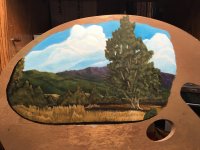whdamon
Corporal
- Joined
- Sep 22, 2009
- Messages
- 446
Continuing with the theme of painting flats and mounting to a visual backdrop
In this case it is a larger flat in resin vs metal. My guess about 1/10th scale.
It is of a Woodland Indian (Shawnee?)
In the following photos you can track from the primer coat , through the acrylic undercoat (Model color) to the final artist oils application
The key with flats is light direction (in this case upper right to lower left) and with a combination of shadows and highlights, add depth
and relief to the subject. Hopefully the close up of the hands shows how the shadows of the shirt and ends of fingers bring the top of the left hand (highlights) to the front
of the piece. That curving of the hand to hold the rifle is what caught my eye when I bought this piece as it would pose a painting challenge in gradient shading
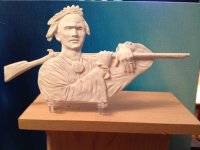
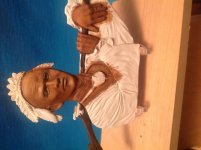
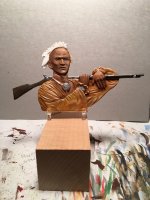
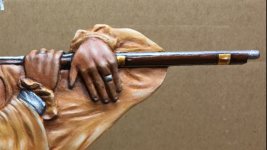

The next step is to come up with a background to mount the piece on.
I wanted to do something out of the ordinary, something that would standout
and raise questions. What would you do??
Stay tuned for next thread entry and find out how I satisfied my need to display
this piece like nothing else in my collection
In this case it is a larger flat in resin vs metal. My guess about 1/10th scale.
It is of a Woodland Indian (Shawnee?)
In the following photos you can track from the primer coat , through the acrylic undercoat (Model color) to the final artist oils application
The key with flats is light direction (in this case upper right to lower left) and with a combination of shadows and highlights, add depth
and relief to the subject. Hopefully the close up of the hands shows how the shadows of the shirt and ends of fingers bring the top of the left hand (highlights) to the front
of the piece. That curving of the hand to hold the rifle is what caught my eye when I bought this piece as it would pose a painting challenge in gradient shading





The next step is to come up with a background to mount the piece on.
I wanted to do something out of the ordinary, something that would standout
and raise questions. What would you do??
Stay tuned for next thread entry and find out how I satisfied my need to display
this piece like nothing else in my collection
Last edited:





